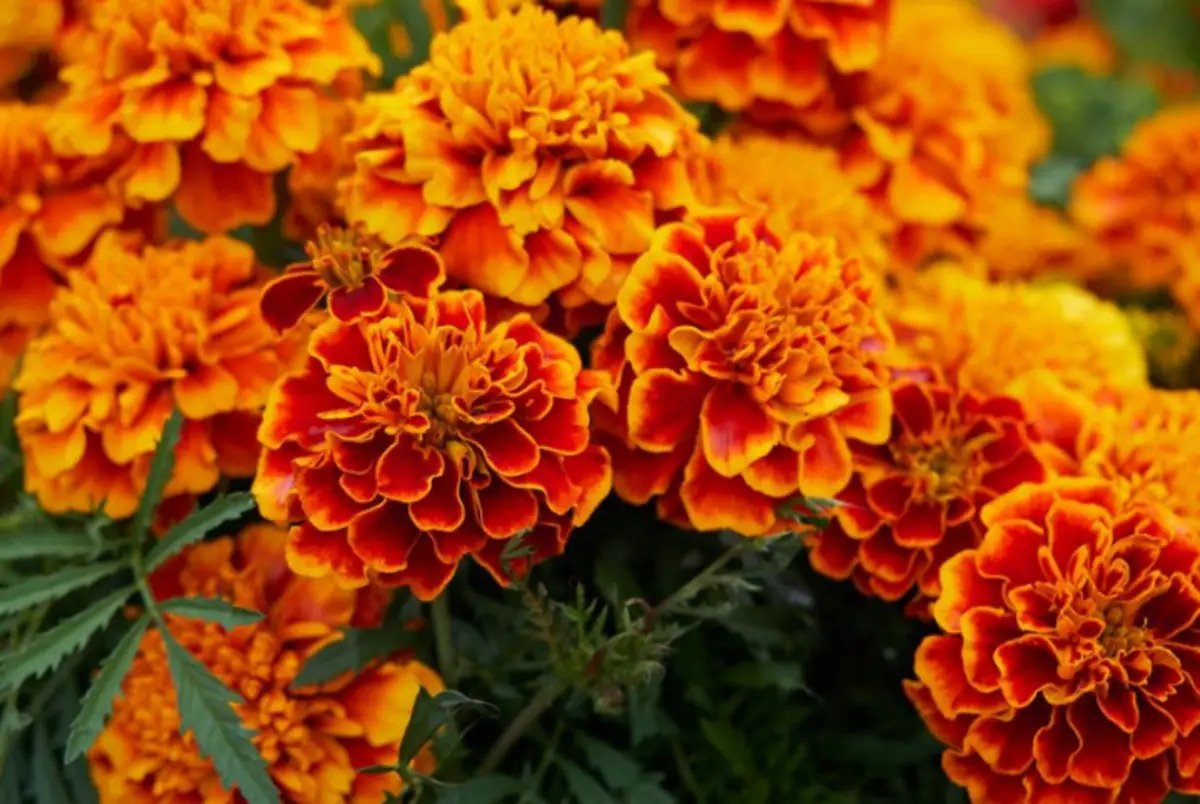
Marigold is a herbaceous plant of the Asteraceae family. This plant is indigenous to Mexico and South America. Marigold cultivation began in the 16th century, when Spanish explorers introduced marigold from South America to Europe. Marigold requires full light and well-drained soil to grow and develop successfully. It is not frost tolerant. Marigold compounds have use in the medicinal, cosmetic, textile, and food industries. Marigold is often grown for decorative purposes. It does not necessitate any specific conditions for effective cultivation, which makes it quite popular among gardeners all over the world.
Marigolds are native to Mexico and Central America. They were first cultivated by the Aztecs for medicinal and ornamental purposes.
Marigolds are annual plants that belong to the sunflower family. They are easy to grow and require minimal care.
The name “marigold” comes from the Anglo-Saxon words “meargealla” and “gorde,” which mean “marsh marigold.” This is because the plant was often found growing in damp, marshy areas.
Marigolds have been used in traditional medicine to treat a wide range of ailments, including headaches, toothaches, and stomach problems. They have anti-inflammatory, antimicrobial, and antioxidant properties.
They are often used in Hindu religious ceremonies and are considered to be a sacred plant. Marigolds are associated with the goddess Lakshmi and are believed to bring wealth and prosperity.
Marigolds are believed to have insect-repellent properties and are often planted in gardens to keep pests away. They are particularly effective at repelling nematodes, aphids, and whiteflies.
Some people believe that marigolds can ward off evil spirits and protect against black magic. In Mexico, they are often hung outside homes to ward off evil spirits and attract good luck.
Marigolds have been used to make dyes for fabric and food coloring. The flowers contain a natural pigment called lutein, which is often used as a food coloring agent.
In Mexico, marigolds are used to create elaborate floral displays called “ofrendas” for the Day of the Dead. These displays are meant to honor deceased loved ones and guide their spirits back to the living world.
Marigolds were once used as a flavoring agent in soups and stews. The flowers have a slightly bitter taste and were often used to add flavor to broths and soups.
The oil from marigold flowers is used in cosmetics and skin care products. It is believed to have anti-inflammatory and healing properties, and is often used to treat skin conditions such as eczema and psoriasis.
Marigolds are often used in companion planting, as they are thought to repel nematodes, beetles, and other pests. They are often planted alongside vegetables and herbs to keep pests away.
The flowers of the marigold plant can be white, yellow, orange, or red. The different colors have different meanings in different cultures.
Marigolds are one of the most commonly planted flowers in the world. They are popular for their bright colors, easy care, and insect-repellent properties.
The French call marigolds “les soucis,” which translates to “the worries.” This is because the flowers were once believed to have the power to cure worries and anxieties.
In some cultures, marigolds are associated with death and are planted on graves. This is particularly true in Mexico, where marigolds are often used in Day of the Dead celebrations.
Marigolds are often used in Indian weddings and are considered to be a symbol of love and devotion. The flowers are often used to make garlands and other decorations.
The Aztecs believed that marigolds had magical properties and used them in religious ceremonies. They believed that the flowers had the power to ward off evil spirits and bring good luck.
Marigolds are often used in the production of herbal teas. The flowers are believed to have a calming effect and are often used to treat anxiety and insomnia.
Some people believe that marigolds can help to reduce inflammation and relieve pain. The flowers contain compounds that have anti-inflammatory and analges properties, and are often used in traditional medicine to treat conditions such as arthritis and joint pain.
Marigolds are sometimes used in cooking, particularly in Mexican and South American cuisine. The flowers are often used to add color to dishes and to garnish salads and desserts.
Marigolds are often used in the production of natural insecticides and pesticides. The flowers contain compounds that are toxic to many pests, and are often used in organic gardening.








